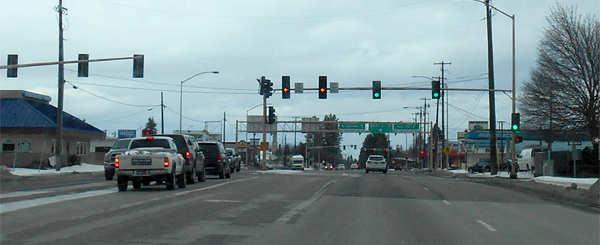In an effort to improve mobility at a major intersection in Coeur d’Alene, ITD’s North Idaho (District 1) traffic engineers activated a new signal function in December.
The signal at the Fourth Street on-ramp to Interstate 90 heading west now allows two lanes of traffic to turn left after yielding to oncoming vehicles and pedestrians. While local drivers may be familiar with how flashing yellow arrows function, this is the first site in the district—and the state—to use double flashing yellow arrows.
“This is one of the busiest intersections in the Coeur d’Alene metropolitan area, which is the fastest-growing area in the state,” ITD District 1 Traffic Engineer Ben Ward said. “We’re open to finding new ways to move more cars through.”
The idea began with former traffic engineer Ryan Hawkins, who first saw a signal like this while passing through Kennewick, Washington, nearly three years ago.
“Technology like this can be leveraged to maintain mobility in congested corridors,” Hawkins said. “We can’t build our way out of this congestion, so we have to identify other options to optimize the infrastructure we currently have.”
After his trip through Kennewick, Hawkins talked to signal manufacturers and brought the idea back to the department’s working groups tasked with identifying innovative solutions. Access to westbound I-90 from Fourth Street became an informal test site for the rest of the state.
Ward said he was initially concerned the public would be confused when approaching this intersection, but since activating the new function three months ago, there have been no issues.
“We haven’t received any concerned calls, and there haven’t been any crashes out there because of the signal,” Ward said. “The signal is moving traffic better.”
Since there are not many signals like this in the region, Ward plans to monitor the site to determine if this technology should be implemented at other busy intersections, such as Prairie Avenue and ID-41 in an upcoming project.
“Right now, we are still watching the signal to make sure it is safe before we start installing more,” Ward said. “So far, so good.”

